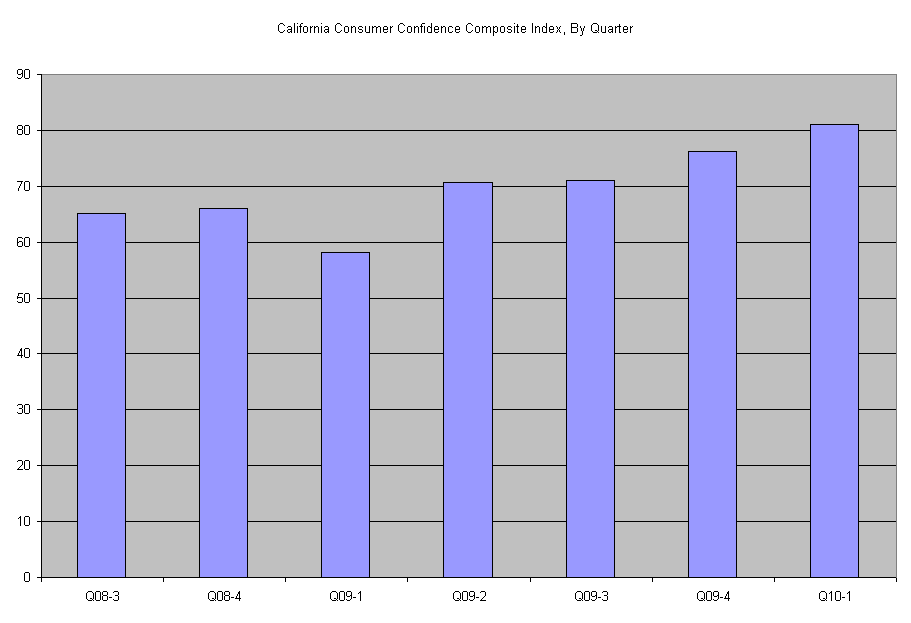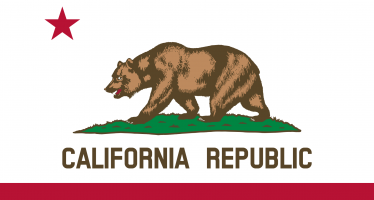Cal recovery lags USA
JUNE 7, 2010
By JOHN SEILER
California’s economy is recovering, but more slowly than that of the rest of America, according to the June 3 forecast of the A. Gary Anderson Center for Economic Research at Chapman University, which I attended at The Hilton in Costa Mesa. As with the U.S. recovery, but more so, California’s recovery will be weaker than the recoveries after past recessions primarily because of a struggling construction sector.
The Chapman forecast has been the most accurate of the forecasts on California. The Thursday forecast was presented by Chapman President Jim Doti and Esmael Adibi, chairman of the Anderson Center.
Their December 2007 forecast predicted the recession that was beginning that very month. And their December 2008 forecast predicted a weak recovery beginning in the summer of 2009. According to recent data, that’s precisely when the ongoing recovery began.
Our candidates for governor keep talking about creating jobs. The reasons are in the numbers of the recession. Payroll jobs growth in California was 1.8 percent in 2005, 1.7 percent in 2006 and 0.8 percent in 2007.
Then the bottom dropped out and jobs “growth” declined 1.3 percent in 2008 and an alarming 6.0 percent in 2009. Jobs will keep declining by 1.4 percent in 2010. Finally, in 2011, growth will resume at an anemic 1.3 percent rate.

This means that, even during the recovery, the unemployment rate won’t improve much from 12.6 percent in April 2010.
In 2009 alone, 902,000 jobs were lost in California. Especially affected, Adibi said, “were huge warehouses in the Inland Empire” that were hit by the closing of Mervyns and Circuit City, as well as declining inventories by other stores.
Adibi pointed out that job creation always lags during a recovery. People discouraged in the past from seeking jobs re-enter the work force and “businesses wait to see what happens” with the economy before hiring new workers.
Unfortunately, he said, as after the previous recessions in the last four decades, California is not recovering as fast as the rest of the country. The reasons for this, and the remedies, should be discussed by the political candidates before the November election. The business cycle cannot be repealed. But there’s no reason why California has to get hit harder during the bad times, while lagging during the good times.
“Jobs growth will gain momentum in 2011,” Adibi said, but “will not be strong by historical standards. Unemployment will be sticky downward. Income and spending growth should exceed inflation — finally.”
Doti pointed out that he expected new federal data released the next day to show that the national recovery, including California, is not robust. That indeed proved the case. The next morning the numbers were released, and CNBC reported:
US employers added 431,000 jobs to nonfarm payrolls in May, but 411,000 of those were temporary census workers. The private sector added just 41,000 jobs: Manufacturing, temporary help and mining added jobs, while construction declined. That number was also well short of the more than 500,000 economists had expected. The unemployment rate, however, fell to 9.7 percent from 9.9 percent in April.
California’s unemployment rate for May will reported later in this month of June.
Construction crash – and recovery
The boom of the mid-2000s brought massive construction throughout the state and skyrocketing prices — until everything crashed. The crash brought a glut of housing that, during the recovery, is keeping construction low, Adibi said.
In the fourth quarter of 2006, construction spending in California did not grow at all. By the first quarter of 2010, construction spending dropped a staggering 36.6 percent from the previous year.
Construction growth won’t occur again until 2011, when it will rise to 8.7 percent in the fourth quarter.
Housing prices already are recovering, but won’t go nearly to the levels of the boom-boom times of 2005-06. Prices dropped 35.1 percent in 2008 and 233.2 percent in 2009. Chapman expects prices to go up 7.8 percent in 2010 and 3.8 percent in 2011.
It should be pointed out that, while Chapman’s economic models have been highly accurate in most areas, especially jobs and economic growth, their past predictions of housing prices have been erratic. But then, not many forecasters got right predictions about housing in the previous decade.
California’s merchandise exports also are increasing, from a low of $27.6 billion in the first quarter of 2009 to $33.0 billion in the first quarter of 2010. But that still lags from a high of $38.5 billion in the second quarter of 2008.
And consumer confidence is up, from a pathetic 58.2 favorable in the first quarter of 2009 to 81.1 percent in the first quarter of 2010.

Budget problems
Adibi expects the state budget to go through “another difficult year” in the attempts to solve the endemic deficits, which the governor pegs at $19 billion for fiscal 2010-11, which begins on July 1.
Next year won’t be any better. The January 2011 budget proposal of the new governor, whomever voters choose, also will be traumatic because, Adibi said, the budget “problem just won’t go away.” He expects the state to get some of the $25 billion in bailout funds Congress is working on to give to the states, but that won’t be nearly enough to plug the deficit hole.
Adibi sits on state Controller John Chiang’s Council of Economic Advisors. Adibi said he has recommend the following program to Chiang to cure the deficit disease:
1. Limit spending.
2. Address the public employees’ retirement system, which a Stanford University study shows is $500 billion in debt. Do so by instituting a defined contribution plan for new hires, replacing the defined benefits plan that puts taxpayers on the hook.
3. Reform the proposition system so that any new expenditure approved by voters must have “a dedicated revenue source attached to it.” That way the general fund wouldn’t getting raided by new programs. A positive example was 1998’s Proposition 10, Rob Reiner’s children’s program initiative that was paid for by a new 50-cent tax on cigarettes.
A negative example of a raid on the general fund was 2002’s Proposition 49, pushed by Arnold Schwarzenegger to advance his political profile before his gubernatorial run in 2003. It raided the general fund to pay for after-school programs. The cost is $550 million a year, part of the reason he raised taxes last year a record $13 billion.
Adibi said these budget reforms are unlikely. But without them, “Taxes will go up.”
Doti added that the recovery will bring a modest increase in revenues for the state government. And on California’s pension problem, he said, “I don’t see any solution outside of bankruptcy or federal involvement.”
Cautionary note
The Chapman economists don’t expect America will plunge into a “double-dip” recession, as happened in the early 1980s, which would hit California especially hard. Nor do they expect the BP oil spill in the Gulf of Mexico or Europe’s economic problems to much affect California.
But they do expect that the massive U.S. budget deficits, $1.4 trillion this year, and the U.S. national debt that just surpassed $13 trillion, to slow economic growth in the future. And if the debt gets out of control, then another recession is possible.
I asked them if the massive debt might trigger future inflation. They said that could occur if the debt isn’t controlled.
For California and the federal government — as well as local governments — the debt piled up even in good times, when surpluses should have been accrued. That profligacy finally is weighing down the economy at all levels. Just as the Chapman economists, and many others, have warned for years.
John Seiler, an editorial writer with The Orange County Register for 19 years, is a reporter and analyst for CalWatchDog.com. His email: [email protected].
Related Articles
Banning Nukes: $4 Billion CA Budget Hit
JUNE 1, 2011 By JOSEPH PERKINS It’s been 22 years since Rancho Seco nuclear power plant generated its last megawatt.
Campaign launched to put CA secession on Nov. ballot
Hot on the heels of a high-profile effort to vote California into six separate states, a different kind of political
Split-roll property tax would hit small business hard
Feb. 18, 2013 By Wayne Lusvardi The attacks on Proposition 13 never seem to end. The 1978 tax-cut initiative’s enemies,



